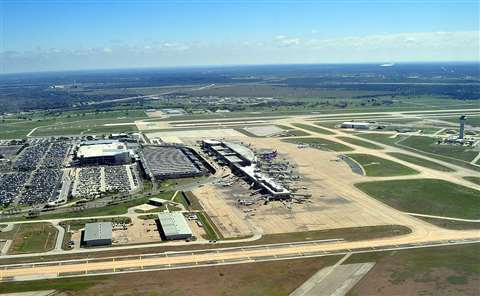US government agrees US$22bn transport projects deal with Texas
08 March 2023
The US Department of Transportation has signed a deal with the City of Austin, Texas, to move forward up to US$22 billion worth of transportation projects.
 Austin-Bergstrom International Airport could be expanded under the agreement (Image: Joe Mabel/Wikimedia Commons CC-BY-3.0)
Austin-Bergstrom International Airport could be expanded under the agreement (Image: Joe Mabel/Wikimedia Commons CC-BY-3.0)
Under the agreement, the Build America Bureau and City of Austin will explore opportunities for innovative project planning, procurement, financing, and delivery.
The deal could involve using low-interest rate financing such as Transportation Infrastructure Finance and Innovation Act (TIFIA) loans, Railroad Rehabilitation and Improvement Financing (RRIF), Private Activity Bonds (PABs), and technical assistance grants.
Among the projects that could benefit from the partnership are:
- Project Connect, a partnership between the City of Austin, Austin Transit Partnership, and Capital Metropolitan Transit Authority to expand and improve the public transportation network for the entire Central Texas region ($7.1 billion).
- Corridor Construction Program, involving the study, planning, design, and construction of transformative safety and mobility improvements on several significant roadways throughout Austin and Complete Communities infrastructure ($3.6 billion).
- Austin Bergstrom International Airport (AUS) Expansion and Development Program ($4 billion).
- I-35 “Cap and Stitch” Program, involving new freeway caps and community stitches along eight miles of the corridor ($963 million).
- Roadway Extensions, Connections, and Capacity Improvements Program to enhance safety ($250 million).
Build America Bureau executive director Morteza Farajian said, “The Bureau’s experts will partner with Austin officials to explore innovative approaches and best practices that can advance projects further into development and construction, so communities benefit sooner from the planned improvements.
“We are dealing with a large and complicated program of projects that will significantly enhance transportation mobility, resiliency, affordability, and safety. To deliver this program effectively and efficiently, we need to form a strong partnership, engage all stakeholders, use innovative approaches and best practices, and take advantage of all tools in our toolbox.”



